Papers by Ivana N . Díaz Unkovic
Toxicon, 2008
Heterophyllaea pustulata (Rubiaceae), a South American genus, is a phototoxic shrub that grows in... more Heterophyllaea pustulata (Rubiaceae), a South American genus, is a phototoxic shrub that grows in the Andean mountain range of the northwest of Argentina, popularly known as ''cegadera''. Animals that ingest the aerial parts of this plant suffer a typical primary photosensitization reaction, clinically revealed by dermatitis and blindness in severe cases. Anthraquinone derivatives (AQs), the main metabolites of this species, are characterized as Type I and/or Type II photosensitizers according to their physicochemical properties. The natural toxicity conditions were reproduced in vivo assays by oral administration of soranjidiol and rubiadin, the main components of the aerial parts. By HPLC analysis, the presence of these AQs was determined in serum and quantified in the skin of experimental animals.
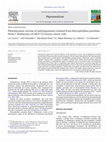
Phytomedicine, 2011
Searching for agents that could be effective in the treatment of cancer, special highlight has fo... more Searching for agents that could be effective in the treatment of cancer, special highlight has focused on the study of numerous plant-derived compounds. We previously demonstrated that anthraquinones (AQs) isolated from a vegetal species: Heterophyllaea pustulata Hook f. (Rubiaceae), such as rubiadin, rubiadin-1-methyl ether, soranjidiol, soranjidiol-1-methyl ether exhibit photosensitizing properties without antecedents as photodynamic agents in malignant cells. In the present study, we investigated the potential role of these AQs as a phototoxic agent against human breast carcinoma using MCF-7c3 cells. All AQs exhibited significant photocytotoxicity on cancer cells at the concentration of 100 M with 1 J/cm 2 light dose, resulting soranjidiol-1-methyl ether in complete cell destruction. The observed cellular killing by photoactivated AQs exhibited close relation with singlet oxygen production, except for soranjidiol-1-methyl ether, where cell viability decrease is in relation to uptake by tumor cells.
Esta obra está bajo una licencia de Creative Commons. Para ver una copia de esta licencia, visite... more Esta obra está bajo una licencia de Creative Commons. Para ver una copia de esta licencia, visite https://creativecommons.org/licenses/by-nc-sa/2.5/ar. Acta Académica es un proyecto académico sin fines de lucro enmarcado en la iniciativa de acceso abierto. Acta Académica fue creado para facilitar a investigadores de todo el mundo el compartir su producción académica. Para crear un perfil gratuitamente o acceder a otros trabajos visite:
Kulturna Bastina, Dec 31, 2011

This volume brings together essays from different fields of the humanities and social sciences th... more This volume brings together essays from different fields of the humanities and social sciences that offer a fresh look at the complexity of artistic and cultural contacts, transfers, and exchanges between Europe and the Middle East. The studies reach far beyond the geographical regions where Europe and the Middle East have met and interacted throughout their long histories, such as the eastern Mediterranean, the south Caucasus, and the Balkans. Their focus is on the variety of “contact zones” of the two worlds with specific artistic creativity, characterized by dynamic processes of movement and interchange between various cultural entities in the broadest and most complex sense of the word. The studies shed new light on diverse phenomena of the “in-between” or “liminal” spaces in art and culture, with special interest in artists and art works from ancient to modern times, from fine arts and architecture to music and video.
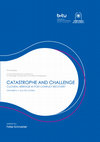
During the Second World War, three main art historian/conservators, France Stele in Slovenia (188... more During the Second World War, three main art historian/conservators, France Stele in Slovenia (1886-1972), Ljubo Karaman
(1886-1971) in Croatia, along with his successor, Cvito Fisković (1908-1996), tried to save various affected areas with minimum
human and financial resources in the former Yugoslavian territory.
The aim of this paper is to make a short analysis of the reconstruction and conservation implemented during, and shortly
after, the Second World War on two example monuments: the Fortified Villa of Emperor Diocletian (Split, Croatia) and the
Kostanjevica monastery (Konstanjevica on river Krka, Slovenia), emphasizing the impact on today‘s function of the monuments.
After the destruction caused by WW II, the opportunity for clearing buildings of minor importance to expose greater monuments
was taken on a larger scale. A good example of this is the Diocletian‘s Fortified Villa (295-305) in Split. The remains of
a monastery of the lazaretto and other lesser buildings in the immediate surroundings were removed to give better views
of the Villa’s massive facades, a procedure that would not be regarded as acceptable today. This approach had a significant
impact on today’s presentation of the emperor’s fortified villa, which was also later damaged during the Croatian
War of Independence in 1991.
Another valuable example that will be discussed is the Kostanjevica monastery, a monument destroyed by fire whose
reconstruction was devised and started to be implemented by the Slovenian conservators and architects in 1942. During the
following decades, and with considerable support from the local community, the interior was renovated and redecorated.
Many restoration and reconstruction works have been carried out for 40 years until 1982. Today Kostanjevica monastery
is one of the most beautifully restored monument complexes in Slovenia, serving as a model of its kind and offering a rich
cultural experience.
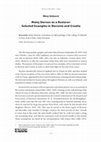
Ars and Humanitas , 2017
Matej Sternen (1870–1949) is better known as an impressionist painter rather
than for his restora... more Matej Sternen (1870–1949) is better known as an impressionist painter rather
than for his restoration work, even though in his impressive career he discovered and
restored a considerable number of works, especially frescos in Slovenia and Dalmatia
(Croatia). His strong interest in restoration can be seen in the numerous notes he
wrote about painting technologies, restoration and conservation techniques. This
enriched his entire opus, as it stimulated him to try numerous painting techniques
and genres, such as frescoes. Sternen was a painter who constructed his paintings very
carefully, and a master in the preparation of the painting’s surface, or “the ground,” and
always considered the laws of colours and their relationships and proportions to the
white painted surface.
In his restoration practice, working together with his close colleagues the art
historians France Stele (1886–1972) and Ljubo Karaman (1886–1971), Matej Sternen
actualized the principle “conserve instead of restore” that was the rule in his day.
This paper is based on fieldwork data and archive sources, kept in Ljubljana, Celje,
Split and Zagreb, and focuses on two important monuments — the painted ceiling
in the Old Manor House in Celje (Slovenia), and a wall painting in the church of St
Michael in Ston (Croatia). These two cases, which are different from both technical
and methodological approaches to monument protection, clearly show Sternen’s
professional expertise and practical realization of “conserve instead of restore,” which
speaks in favour of preserving the original work as opposed to aggressive restoration
interventions.

In Diocletian’s Palace (Split, Croatia), the sphinxes were most likely the keepers of the Emperor... more In Diocletian’s Palace (Split, Croatia), the sphinxes were most likely the keepers of the Emperor’s last resting ground. Just like the pharaohs of Ancient Egypt, the Emperor was attributed with divine origin and power.
The Emperor Diocletian (244-311) called himself the son of Jupiter and that is exactly why he wished to decorate his last resting place-mausoleum with divine symbols, made of the same precious materials that the pharaohs once favoured.
It was most likely that the Palace architects commissioned pillars and sphinxes Egypt. But, it is also possible, according to some Croatian art historian hypothesis, that the Emperor himself sent them during his campaigns in Egypt, in the period 297-298.
Apart from the destroyed porphyry sarcophagus of the Emperor, there were also damaged
sphinx sculptures in the palace. In the beginning of the 20th century thirteen sculptures have been found, but none of them was intact. They were damaged in the same manner during the turbulent process of Christianization.
In the earlier periods, this transformation was usually dated to the 8th-9th centuries, but in 1930-ties Danish archaeologist Ejnar Dyggve agrees with Croatian art historian and conservator Ljubo Karaman on his original dating of these transformations to the 5th-6th centuries.
In the paper will be discussed the origin and the meaning of the Sphinx, their discovery during the conservation works in 1930-ties and 1960-ties.
A special part is going to be given to the conservation work of the Sphinx at the Peristyle in the last few years conducted by the Croatian Conservation Institute in Split (Croatia). This Sphinx was part of an assembly of four sphinxes at the entrance to the mausoleum and today is a special attraction for the tourists.
Ljubo Karaman and France Stele, leading conservators in Croatia and Slovenia, respectively, were ... more Ljubo Karaman and France Stele, leading conservators in Croatia and Slovenia, respectively, were responsible for development of conservation practice from 1913 until 1965 in the ex-Yugoslav region.
In the turbulent war and postwar period they sought, as students of Max Dvorak, to maximally apply principles of Austrian conservation to practice, endeavoring to conserve and restore urban complexes, monuments and supervise the restoration of paintings and sculptures in the absence of any monument preservation legislative.
This work will describe procedures used in preservation of urban complexes and will detail the relationship of the two conservators as well as an important aspect of their influence on future generations of conservators and restorers, which is still an topical issue.
Tržište umjetnina u Hrvatskoj karakterizira nepostojanje odrednica (pre)prodaje umjetnina, percep... more Tržište umjetnina u Hrvatskoj karakterizira nepostojanje odrednica (pre)prodaje umjetnina, percepcije umjetničkog djela i njegove vrijednosti, te nepostojanje hijerarhije ovlaštenih institucija za nadgledanje procesa kupoprodaje umjetnina. U radu se iznosi prijedlog modela vrednovanja umjetnina, zaštite i edukacije vlasnika/kupaca umjetnina na konceptualnoj razini s primjerima iz inozemstva i uvidom u galeristički pristup. Pojašnjava se tržišna uključenost relevantnih sudionika obzirom na autentičnost i realnu cijenu djela, a temeljem analitičke ekspertize umjetnina.
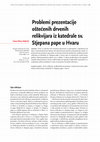
In practice we are often faced with the problem of reconstructing
parts of an artwork. If we deci... more In practice we are often faced with the problem of reconstructing
parts of an artwork. If we decide (not) to
do it, we must offer purposeful arguments. The positive
experience of foreign colleagues suggests that, in addition
to taking advice from art historians, it is also useful to
consult conservation experts from different fields, such
as sculptors, designers, chemists and physicists.
The intention of the article’s author was to draw attention
to gradual decision making in the process of
reconstruction as one of the principles of conservation
and restoration, and to demonstrate the application of this
principle in the case of wooden polychrome and gilded
reliquaries from the cathedral of Pope St. Stephen in
Hvar, which were restored in 2008/2009 in the Croatian
Conservation Institute–Department of Split, as a part of
their regular program.
The paper analyzes several methods of reconstruction–
from the traditional one to the use of modern materials
and the advantages and disadvantages of their usage in
the case of selected examples. Original storage conditions,
physical characteristics of materials that could be used for
the reconstruction of the relics and the overall aesthetic
impression have all been taken into account when deciding
about their restoration. Restoration interventions were
elaborated together with a thorough evaluation of the
positive and negative aspects of the restoration proposal:
the reconstruction in timber with the purpose of distinction
between the original and the reconstructed part, the
usage of Plexiglas and copper wires.
bib.irb.hr
Statistika bibliografskih podataka o projektima, znanstvenicima i znantsvenim institucijama.
33rd Congress of the International Committee of the …, Jan 1, 2012
electronic form only:: NE
Statistika bibliografskih podataka o projektima, znanstvenicima i znantsvenim institucijama.
bib.irb.hr
Statistika bibliografskih podataka o projektima, znanstvenicima i znantsvenim institucijama.
hrcak.srce.hr
It is a truth universally aknowledged that politics and science do not interrelate. The manifesta... more It is a truth universally aknowledged that politics and science do not interrelate. The manifestations of youthful arrogance in the field of science have always been considered unwise, since they have always resulted in a large number of...





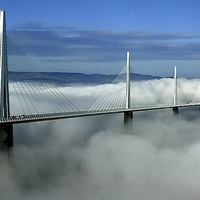
Uploads
Papers by Ivana N . Díaz Unkovic
(1886-1971) in Croatia, along with his successor, Cvito Fisković (1908-1996), tried to save various affected areas with minimum
human and financial resources in the former Yugoslavian territory.
The aim of this paper is to make a short analysis of the reconstruction and conservation implemented during, and shortly
after, the Second World War on two example monuments: the Fortified Villa of Emperor Diocletian (Split, Croatia) and the
Kostanjevica monastery (Konstanjevica on river Krka, Slovenia), emphasizing the impact on today‘s function of the monuments.
After the destruction caused by WW II, the opportunity for clearing buildings of minor importance to expose greater monuments
was taken on a larger scale. A good example of this is the Diocletian‘s Fortified Villa (295-305) in Split. The remains of
a monastery of the lazaretto and other lesser buildings in the immediate surroundings were removed to give better views
of the Villa’s massive facades, a procedure that would not be regarded as acceptable today. This approach had a significant
impact on today’s presentation of the emperor’s fortified villa, which was also later damaged during the Croatian
War of Independence in 1991.
Another valuable example that will be discussed is the Kostanjevica monastery, a monument destroyed by fire whose
reconstruction was devised and started to be implemented by the Slovenian conservators and architects in 1942. During the
following decades, and with considerable support from the local community, the interior was renovated and redecorated.
Many restoration and reconstruction works have been carried out for 40 years until 1982. Today Kostanjevica monastery
is one of the most beautifully restored monument complexes in Slovenia, serving as a model of its kind and offering a rich
cultural experience.
than for his restoration work, even though in his impressive career he discovered and
restored a considerable number of works, especially frescos in Slovenia and Dalmatia
(Croatia). His strong interest in restoration can be seen in the numerous notes he
wrote about painting technologies, restoration and conservation techniques. This
enriched his entire opus, as it stimulated him to try numerous painting techniques
and genres, such as frescoes. Sternen was a painter who constructed his paintings very
carefully, and a master in the preparation of the painting’s surface, or “the ground,” and
always considered the laws of colours and their relationships and proportions to the
white painted surface.
In his restoration practice, working together with his close colleagues the art
historians France Stele (1886–1972) and Ljubo Karaman (1886–1971), Matej Sternen
actualized the principle “conserve instead of restore” that was the rule in his day.
This paper is based on fieldwork data and archive sources, kept in Ljubljana, Celje,
Split and Zagreb, and focuses on two important monuments — the painted ceiling
in the Old Manor House in Celje (Slovenia), and a wall painting in the church of St
Michael in Ston (Croatia). These two cases, which are different from both technical
and methodological approaches to monument protection, clearly show Sternen’s
professional expertise and practical realization of “conserve instead of restore,” which
speaks in favour of preserving the original work as opposed to aggressive restoration
interventions.
The Emperor Diocletian (244-311) called himself the son of Jupiter and that is exactly why he wished to decorate his last resting place-mausoleum with divine symbols, made of the same precious materials that the pharaohs once favoured.
It was most likely that the Palace architects commissioned pillars and sphinxes Egypt. But, it is also possible, according to some Croatian art historian hypothesis, that the Emperor himself sent them during his campaigns in Egypt, in the period 297-298.
Apart from the destroyed porphyry sarcophagus of the Emperor, there were also damaged
sphinx sculptures in the palace. In the beginning of the 20th century thirteen sculptures have been found, but none of them was intact. They were damaged in the same manner during the turbulent process of Christianization.
In the earlier periods, this transformation was usually dated to the 8th-9th centuries, but in 1930-ties Danish archaeologist Ejnar Dyggve agrees with Croatian art historian and conservator Ljubo Karaman on his original dating of these transformations to the 5th-6th centuries.
In the paper will be discussed the origin and the meaning of the Sphinx, their discovery during the conservation works in 1930-ties and 1960-ties.
A special part is going to be given to the conservation work of the Sphinx at the Peristyle in the last few years conducted by the Croatian Conservation Institute in Split (Croatia). This Sphinx was part of an assembly of four sphinxes at the entrance to the mausoleum and today is a special attraction for the tourists.
In the turbulent war and postwar period they sought, as students of Max Dvorak, to maximally apply principles of Austrian conservation to practice, endeavoring to conserve and restore urban complexes, monuments and supervise the restoration of paintings and sculptures in the absence of any monument preservation legislative.
This work will describe procedures used in preservation of urban complexes and will detail the relationship of the two conservators as well as an important aspect of their influence on future generations of conservators and restorers, which is still an topical issue.
parts of an artwork. If we decide (not) to
do it, we must offer purposeful arguments. The positive
experience of foreign colleagues suggests that, in addition
to taking advice from art historians, it is also useful to
consult conservation experts from different fields, such
as sculptors, designers, chemists and physicists.
The intention of the article’s author was to draw attention
to gradual decision making in the process of
reconstruction as one of the principles of conservation
and restoration, and to demonstrate the application of this
principle in the case of wooden polychrome and gilded
reliquaries from the cathedral of Pope St. Stephen in
Hvar, which were restored in 2008/2009 in the Croatian
Conservation Institute–Department of Split, as a part of
their regular program.
The paper analyzes several methods of reconstruction–
from the traditional one to the use of modern materials
and the advantages and disadvantages of their usage in
the case of selected examples. Original storage conditions,
physical characteristics of materials that could be used for
the reconstruction of the relics and the overall aesthetic
impression have all been taken into account when deciding
about their restoration. Restoration interventions were
elaborated together with a thorough evaluation of the
positive and negative aspects of the restoration proposal:
the reconstruction in timber with the purpose of distinction
between the original and the reconstructed part, the
usage of Plexiglas and copper wires.
(1886-1971) in Croatia, along with his successor, Cvito Fisković (1908-1996), tried to save various affected areas with minimum
human and financial resources in the former Yugoslavian territory.
The aim of this paper is to make a short analysis of the reconstruction and conservation implemented during, and shortly
after, the Second World War on two example monuments: the Fortified Villa of Emperor Diocletian (Split, Croatia) and the
Kostanjevica monastery (Konstanjevica on river Krka, Slovenia), emphasizing the impact on today‘s function of the monuments.
After the destruction caused by WW II, the opportunity for clearing buildings of minor importance to expose greater monuments
was taken on a larger scale. A good example of this is the Diocletian‘s Fortified Villa (295-305) in Split. The remains of
a monastery of the lazaretto and other lesser buildings in the immediate surroundings were removed to give better views
of the Villa’s massive facades, a procedure that would not be regarded as acceptable today. This approach had a significant
impact on today’s presentation of the emperor’s fortified villa, which was also later damaged during the Croatian
War of Independence in 1991.
Another valuable example that will be discussed is the Kostanjevica monastery, a monument destroyed by fire whose
reconstruction was devised and started to be implemented by the Slovenian conservators and architects in 1942. During the
following decades, and with considerable support from the local community, the interior was renovated and redecorated.
Many restoration and reconstruction works have been carried out for 40 years until 1982. Today Kostanjevica monastery
is one of the most beautifully restored monument complexes in Slovenia, serving as a model of its kind and offering a rich
cultural experience.
than for his restoration work, even though in his impressive career he discovered and
restored a considerable number of works, especially frescos in Slovenia and Dalmatia
(Croatia). His strong interest in restoration can be seen in the numerous notes he
wrote about painting technologies, restoration and conservation techniques. This
enriched his entire opus, as it stimulated him to try numerous painting techniques
and genres, such as frescoes. Sternen was a painter who constructed his paintings very
carefully, and a master in the preparation of the painting’s surface, or “the ground,” and
always considered the laws of colours and their relationships and proportions to the
white painted surface.
In his restoration practice, working together with his close colleagues the art
historians France Stele (1886–1972) and Ljubo Karaman (1886–1971), Matej Sternen
actualized the principle “conserve instead of restore” that was the rule in his day.
This paper is based on fieldwork data and archive sources, kept in Ljubljana, Celje,
Split and Zagreb, and focuses on two important monuments — the painted ceiling
in the Old Manor House in Celje (Slovenia), and a wall painting in the church of St
Michael in Ston (Croatia). These two cases, which are different from both technical
and methodological approaches to monument protection, clearly show Sternen’s
professional expertise and practical realization of “conserve instead of restore,” which
speaks in favour of preserving the original work as opposed to aggressive restoration
interventions.
The Emperor Diocletian (244-311) called himself the son of Jupiter and that is exactly why he wished to decorate his last resting place-mausoleum with divine symbols, made of the same precious materials that the pharaohs once favoured.
It was most likely that the Palace architects commissioned pillars and sphinxes Egypt. But, it is also possible, according to some Croatian art historian hypothesis, that the Emperor himself sent them during his campaigns in Egypt, in the period 297-298.
Apart from the destroyed porphyry sarcophagus of the Emperor, there were also damaged
sphinx sculptures in the palace. In the beginning of the 20th century thirteen sculptures have been found, but none of them was intact. They were damaged in the same manner during the turbulent process of Christianization.
In the earlier periods, this transformation was usually dated to the 8th-9th centuries, but in 1930-ties Danish archaeologist Ejnar Dyggve agrees with Croatian art historian and conservator Ljubo Karaman on his original dating of these transformations to the 5th-6th centuries.
In the paper will be discussed the origin and the meaning of the Sphinx, their discovery during the conservation works in 1930-ties and 1960-ties.
A special part is going to be given to the conservation work of the Sphinx at the Peristyle in the last few years conducted by the Croatian Conservation Institute in Split (Croatia). This Sphinx was part of an assembly of four sphinxes at the entrance to the mausoleum and today is a special attraction for the tourists.
In the turbulent war and postwar period they sought, as students of Max Dvorak, to maximally apply principles of Austrian conservation to practice, endeavoring to conserve and restore urban complexes, monuments and supervise the restoration of paintings and sculptures in the absence of any monument preservation legislative.
This work will describe procedures used in preservation of urban complexes and will detail the relationship of the two conservators as well as an important aspect of their influence on future generations of conservators and restorers, which is still an topical issue.
parts of an artwork. If we decide (not) to
do it, we must offer purposeful arguments. The positive
experience of foreign colleagues suggests that, in addition
to taking advice from art historians, it is also useful to
consult conservation experts from different fields, such
as sculptors, designers, chemists and physicists.
The intention of the article’s author was to draw attention
to gradual decision making in the process of
reconstruction as one of the principles of conservation
and restoration, and to demonstrate the application of this
principle in the case of wooden polychrome and gilded
reliquaries from the cathedral of Pope St. Stephen in
Hvar, which were restored in 2008/2009 in the Croatian
Conservation Institute–Department of Split, as a part of
their regular program.
The paper analyzes several methods of reconstruction–
from the traditional one to the use of modern materials
and the advantages and disadvantages of their usage in
the case of selected examples. Original storage conditions,
physical characteristics of materials that could be used for
the reconstruction of the relics and the overall aesthetic
impression have all been taken into account when deciding
about their restoration. Restoration interventions were
elaborated together with a thorough evaluation of the
positive and negative aspects of the restoration proposal:
the reconstruction in timber with the purpose of distinction
between the original and the reconstructed part, the
usage of Plexiglas and copper wires.
These examples demonstrate that sites of memory and memorialisation in post-war have a strong symbolic character, which is instrumentalized by those involved in the creation of official memory politics in order to reinforce certain identities in public and to show whose suffering deserves to be publicly remembered.
Officially organized commemorative practices also serve as constant reminders of which narratives and whose memories of the war are not part of the collective identity and thus do not deserve to be remembered in public space. It is important to analyse these different and diverse aspects of memorialisation since they offer us insights into the various layers of memory and narratives of the 'Homeland War' that result from such competing memories used also as a basis of the current situation in the Near East and what we can face in the near future. Some recent projects demonstrate the attempt to revitalize these monuments, but they are without governmental financial support, and therefore rely on very low budgets and the enthusiasm of a few activist groups. For example the regional platform “Inappropriate Monuments” created to establish a framework for the revalorisation and protection of their anti-fascist heritage and monument heritage. There is also a trace of the phenomenon of interest by Western people mostly amateur historians or as a trend of the generation Y (born after 1995) attracted to emerge into the socialist atmosphere through various individual or organized tours for example: crazycommunisttours. Taking into account the scope of this heritage, the efforts invested in rediscovery, protection and conservation treatment of memorials require significant funds. But before raising the question of funding, one should ask if and for whom this disputed heritage should be restored? In what ways did the change of political paradigm make these monuments undesirable in the post-socialist countries?
Karaman and France Stelè in the context of Vienna School of Art history".
The goal of the paper is to shortly make the analysis of the reconstruction and conservation implemented during and shortly after the Second World War on two examples: Diocletian's Palace (Split, Croatia) and Kostanjevica monastery (Konstanjevica on river Krka, Slovenia) emphasizing the impact on today's function of the monuments.
On a larger scale after the destruction in the Second World War the opportunity was taken for clearing buildings of minor importance to expose greater monuments. A good example is Diocletian's Palace (295-305) in Split in the immediate surroundings of which the remains of a monastery of the lazaretto and of other lesser buildings were removed to give better views of the Palace's massive facades a procedure that would not be regarded as acceptable today. This approach had a significant impact on today's presentation of the Palace which was also later damaged during the War in 1991.
How the reconstruction of a monument destroyed by fire was solved by the Slovenian conservator and architects in 1942 – 1944 will be discussed on the example of the Kostanjevica monastery.
During the following decades, and with considerable support from the local community, the interior was renovated and redecorated. Many restoration and reconstruction works have since been carried out. Today is one of the most beautiful restored monument complexes in Slovenia, serving as a model of its kind and offering a rich cultural experience.
A brief overview of social and political scene in the past is also given in the presentation, in order to assure a full grasp of the negative impact of politics on art and science. The outcome of these impacts is always the same. Many examples that are found in contemporary history serve a proof to review the role of conservators today in decision making of public space presentation and preservation.
In the European Commission website for the Horizon 2020 is stated that we have to try to “maximise the returns to society form investment in science and technology”. It is clear that all recently graduated Doctoral students and Postdoctoral fellows are at a crucial career stage, yet it is often uncertain who should take responsibility in ensuring that proper career advice is provided to young researchers: host institution or research funder? The question brought up was whether the funder should make the career advice mandatory within programmes or ‘only’ closely monitored when it is provided. In any case, it was felt that the creation of a career advisor position within institutions is essential. EURAXESS could possibly have a role to play but experienced advisors/mentors are needed regardless. But if we see the job opportunities on EURAXESS website, it is noticeable that there are few of them available for researches in the Humanities.
This situation is very contradictory. On the public visibility side, EU funding Committees like Marie Curie Cofound grants are transmitting the importance of the ‘humanities and social sciences’ contribution to the European research area. In reality, the advice paves the way to trans-disciplinarity in the non-academic sector. Committees and people in charge of the projects are conducting these policies, and according to their implementation, it seems that it is better to change the field of research, seeing this as the only current way to drop the numbers of unemployed researchers in Humanities. Is this the way we should be headed?
During my talk I would like to statistically prove these observations, using a survey of jobs in the field of conservation of cultural heritage ending in 2014, and a short screening of the current Marie Curie projects in Humanities. All of this will serve as a survey for the job opportunities situation in the Humanities field, and will showcase the real EU investment interests in this field, as well as a base for a fruitful discussion.
Luxembourg, 10 – 11 December 2015.
world wars
The comparison of conservation methodology approach in practice in
the ex Yugoslavian region have not yet been researched, and it is crucial for a better documentation of the development of conservation practices. This, in turn, provides a better understanding and implementation
of conservation practices in our times. In this work, archival data of the
history and theory of the monument protection in Croatia and Slovenia
have been compared through the work of conservators and art historians Ljubo Karaman and France Stele. The focus has been placed on
the period from just after the collapse of the Austrian Hungarian Monarchy until the end of the WWII.Through this work, a better understanding
of the usage of different types of material and the current state of the
monument as a base for future conservation works has been achieved.
The research of these cultural heritage conservation-restoration procedures has yielded a chronological representation of the most important
restored artworks, and the descriptions of their respective restoration
procedures and used materials. All of this acquired knowledge has
been ordered using data mapping techniques (data, position, master,
restoration work and photography of the monument or artwork), and related to their socio-political context by the study of the political situation
of their time. During this research many traces of looted art during the
WWII and the process of their restitution have also been identified and
exposed. This work has also provided new data on the art historical,
historical (especially political) and contemporary influences in Europe
in the protection of ex-Yugoslavian monuments during the period after
WWII. Its interdisciplinary approach, using statistical, historical, material
science, and political science techniques, makes it
applicable in a wide variety of fields, and most importantly, gives it interest to the general public.
This professional relationship develops from 1925 until 1932 guided by the head conservator Ljubo Karaman in the cooperation with Slovenian restorer/painter Matej Sternen and Croatian restorer Ferdo Goglia. Ljubo Karaman starts to differentiate the analysis approach of the works of art on the basis of restoration work results.
This work will present the concept of relationship between the restorer and conservator, as well as provide insight into development and motive for such relationship during the aforementioned time period. (DECLINE)
The restoration profession in the period just before the 2nd World War starts to be perceived not only as a craft but as a scientific field which can give new information about the typology of master workshops.
Karaman’s scientific conclusion was that only by efficient collaboration between art historians and restorers can successful heritage protection be accomplished, guided by examples from Austria, Germany, Italy and France where the field of technical conservation (encompassing architects, restorers specialized for collaboration with conservators) was being successfully applied for a long period of time.
Such attitude and endeavor have yielded the inception of Restoration Department in Zagreb in 1946, when the chemist and painter Ferdo Goglia starts to take thorough notes during the restoration procedure that later develops the typological restoration documentation.
The acceptance of restoration as an inevitable meeting point between conservation practice and analysis of cultural heritage is evident through present days. (METHAMORPHOSIS)
At the end of the paper the evolution of the conservation terminology in the 2nd middle of the 20th century will be explained. Referring mostly to the synergy of the conservation and restoration profession, and today’s flexible transit between these two closely related fields. Today the conservator-art historian can preserve/restore the work of art while the conservator-restorer has the theoretical possibility to approach its analysis. (REBIRTH)
In the turbulent war and postwar period they sought, as students of Max Dvorak, to maximally apply principles of Austrian conservation to practice, endeavoring to conserve and restore urban complexes, monuments and supervise the restoration of paintings and sculptures in the absence of any monument preservation legislative.
This work will describe procedures used in preservation of urban complexes and will detail the relationship of the two conservators as well as an important aspect of their influence on future generations of conservators and restorers, which is still an topical issue.